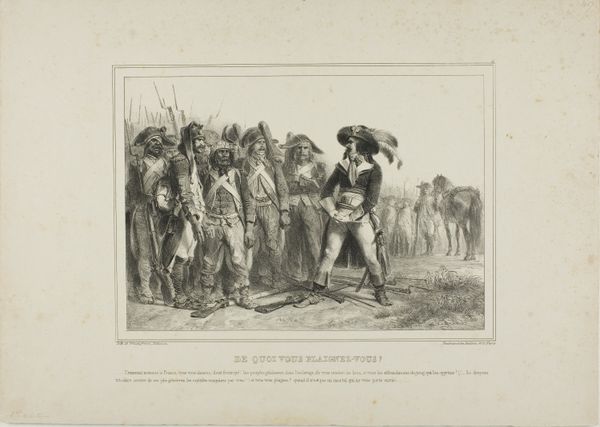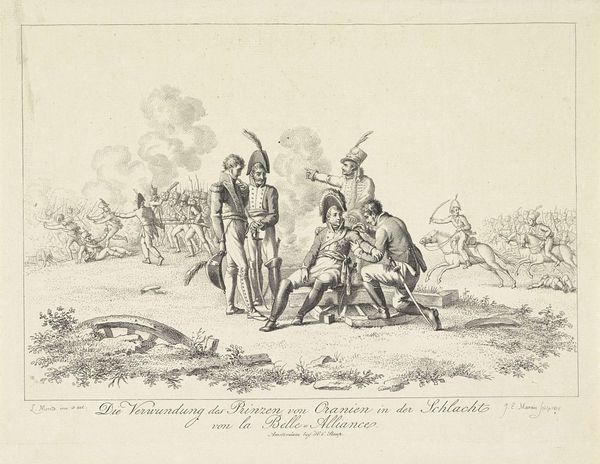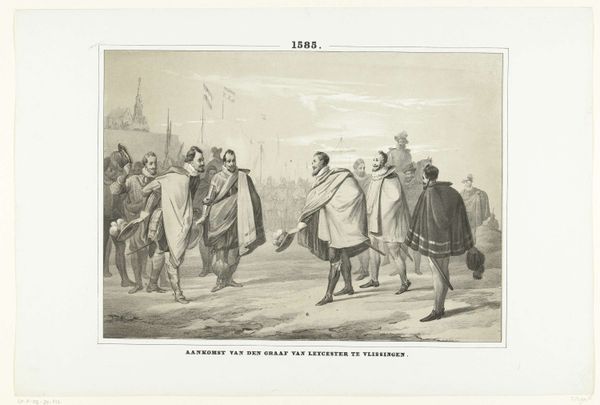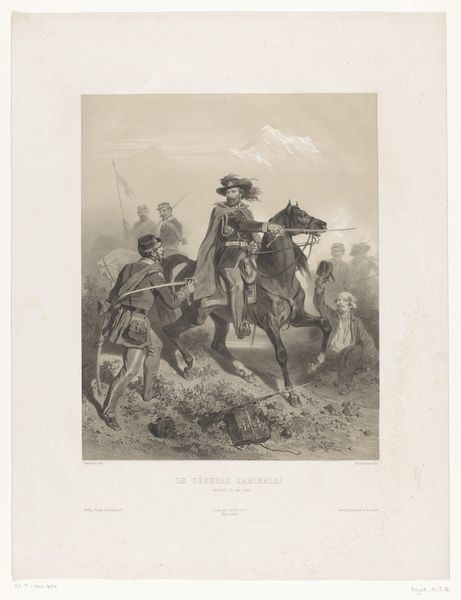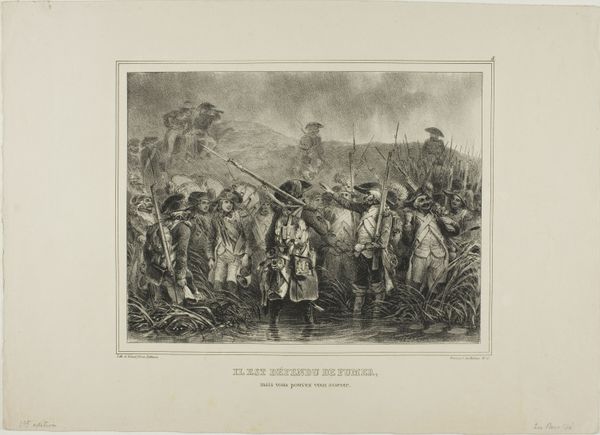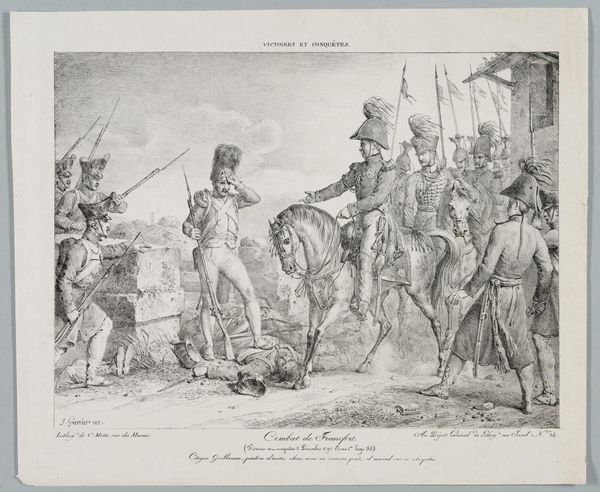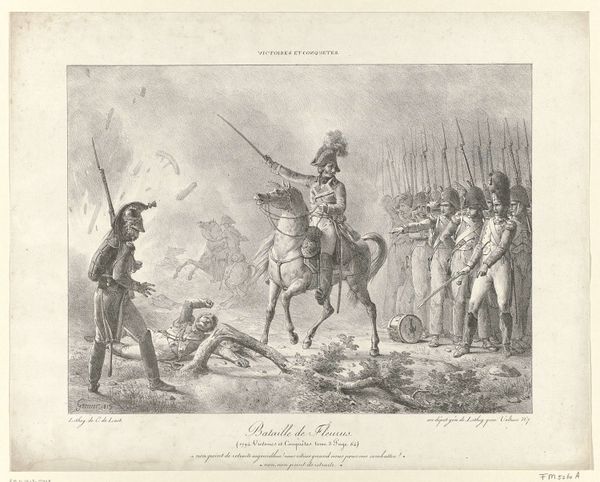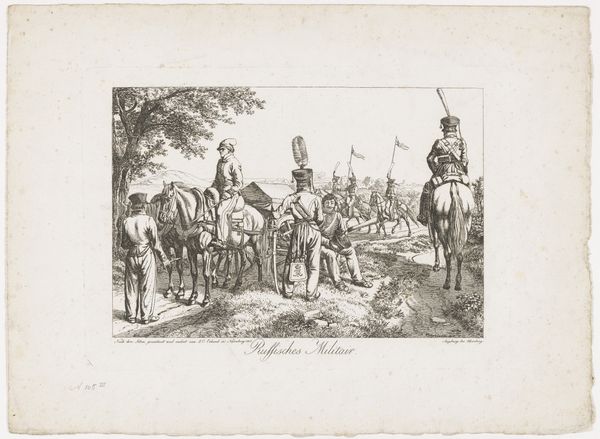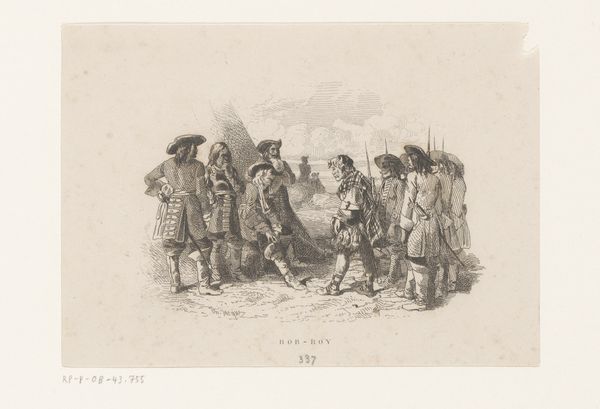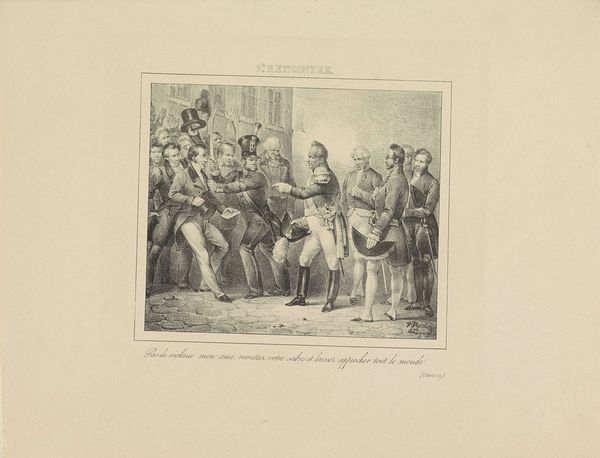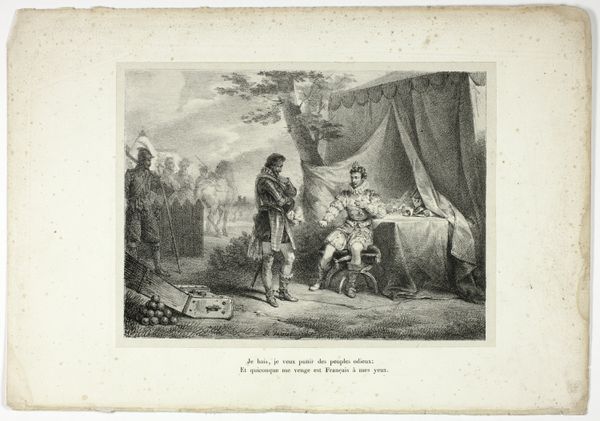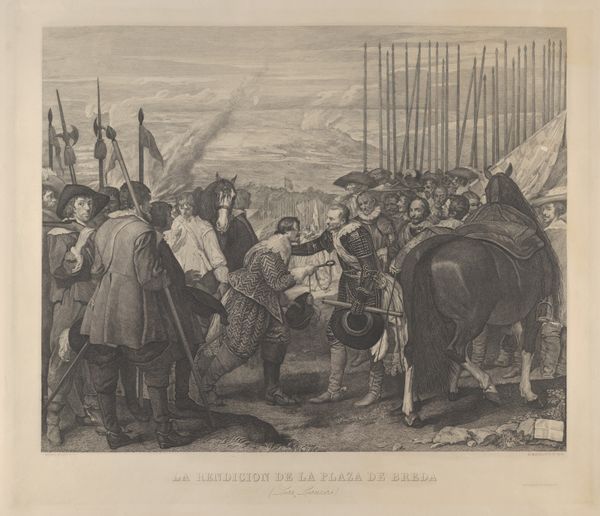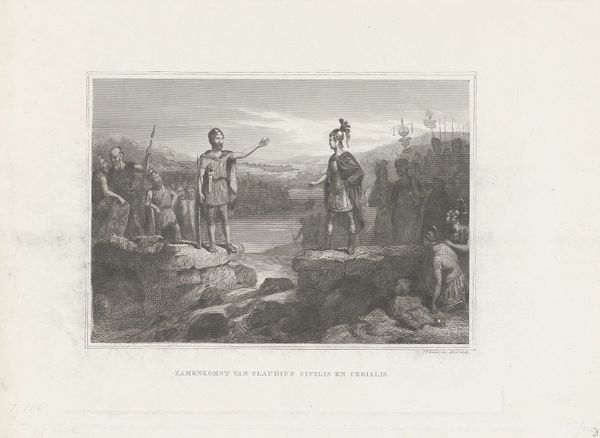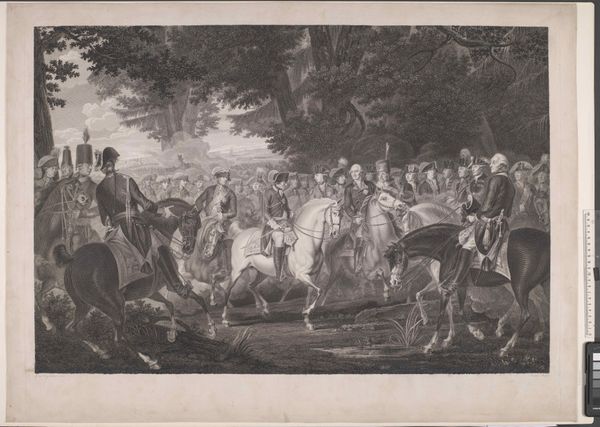
Aankomst van de afgevaardigden op de hofstede Welna aan de Amstel, 1650 1853 - 1855
0:00
0:00
drawing, print, engraving
#
portrait
#
drawing
#
narrative-art
#
dutch-golden-age
# print
#
old engraving style
#
landscape
#
cityscape
#
genre-painting
#
history-painting
#
academic-art
#
engraving
Dimensions: height 353 mm, width 529 mm
Copyright: Rijks Museum: Open Domain
Curator: What a formal greeting this is. The mood is official, ceremonial, a feeling only heightened by the gray scale. Editor: Absolutely. What strikes you, first off, is that you’re beholding "Arrival of the Delegates at the Welna Estate on the Amstel, 1650," an engraving by Albertus Anthonius Nunnink, completed sometime between 1853 and 1855. But I am curious about your read on its greyscale, as this print translates an earlier moment. Curator: The limitation of gray seems to lend itself to serious moments. We see so clearly the formality in dress—each character’s sartorial symbolism denoting status and affiliation. What does the landscape framing contribute, in your reading? Editor: Landscape, as ever, speaks to context. In this instance, it roots this elite parley in a specific time and place; it also softens the inherent class divides with nature's supposed neutrality. Curator: The flags billowing near the water, what message are they communicating through their repeated appearance? Editor: These flags, signaling the reach of Amsterdam, symbolize authority but also prompt reflection on whose narratives are elevated through such official commemorations. The original meeting certainly took place but I'd want to tease out what meaning was attributed during this specific historicizing rendition, almost two centuries later, given its position as an exercise in historical image-making. Curator: I tend to lean toward those very readings, exploring continuity and meaning across time through symbols themselves. These characters appear as fixed reference points. Editor: It serves to ask how those very reference points help justify or uphold various claims in society through its images. I wonder how Dutch identity was being constructed in the mid-19th century using imagery from its Golden Age. Curator: It makes one consider the emotional and historical weight transferred through prints. Editor: Precisely. Visual traditions can uphold power or they can inspire meaningful dialogue to upend traditional hierarchies. A print like this exists to further those debates.
Comments
No comments
Be the first to comment and join the conversation on the ultimate creative platform.
